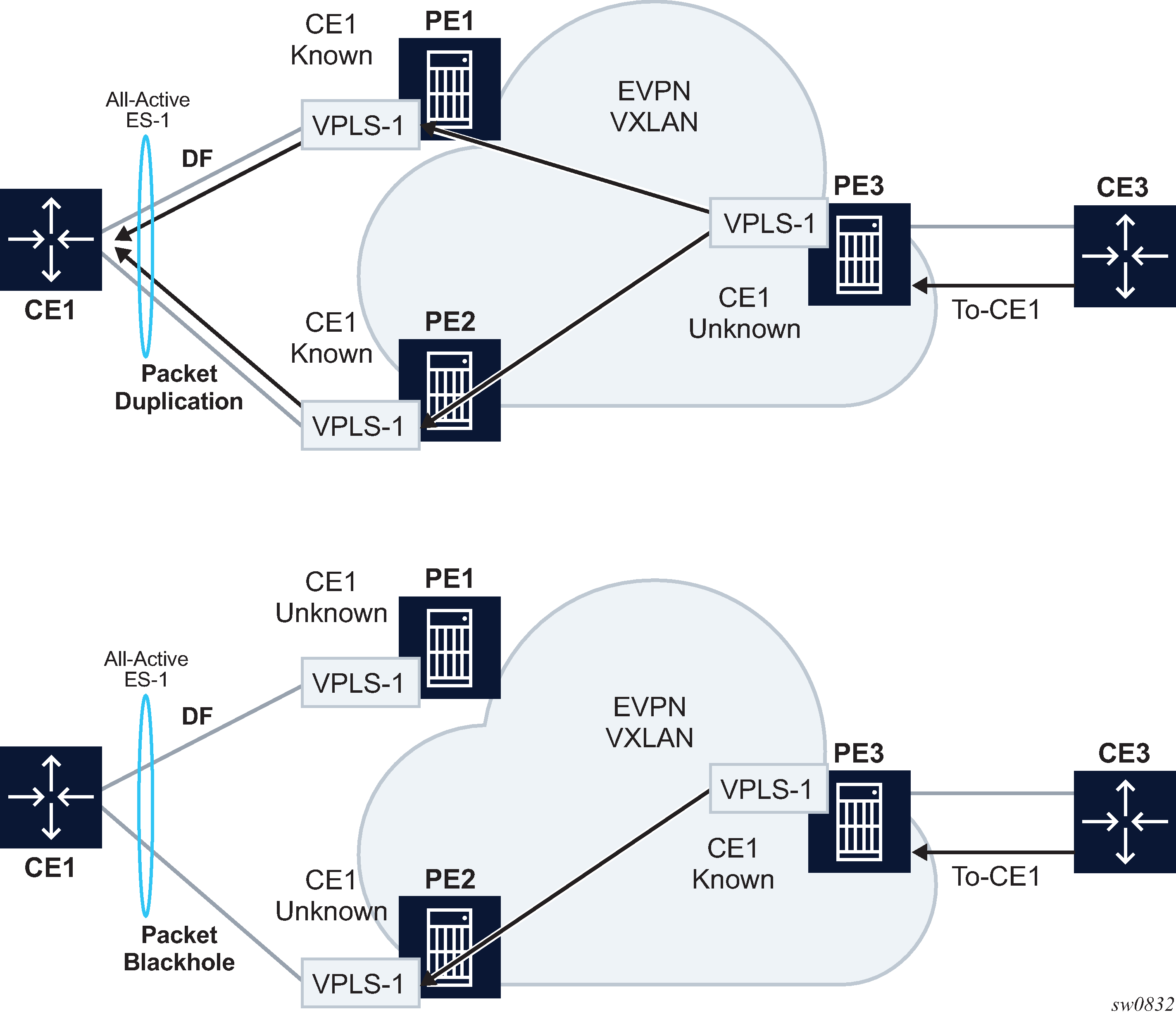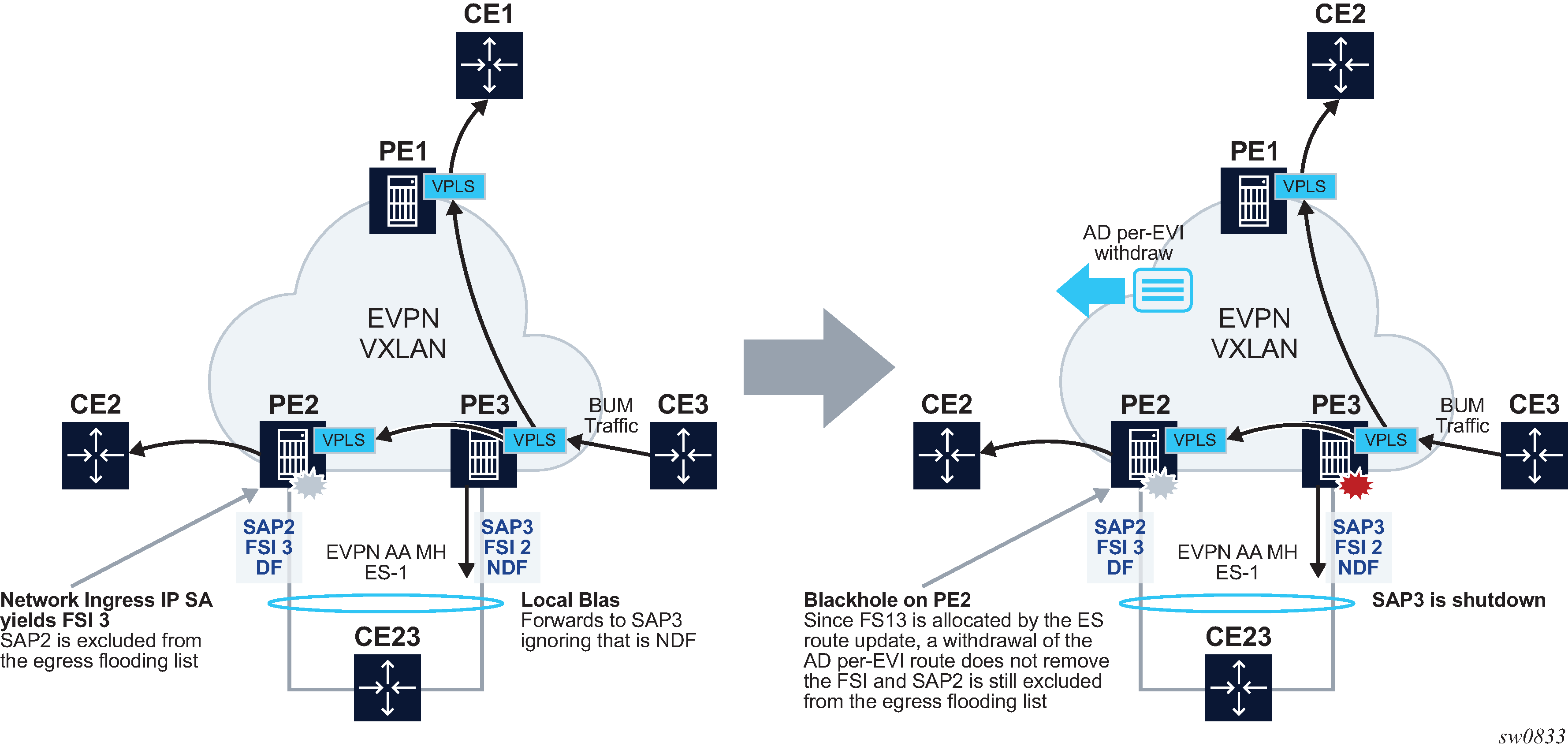In EVPN MPLS networks, an ingress PE that uses ingress replication to flood unknown unicast traffic pushes a BUM MPLS label that is different from a unicast label. The egress PEs use this BUM label to identify such BUM traffic to apply DF filtering for All-Active multihomed sites. In PBB-EVPN, in addition to the multicast label, the egress PE can also rely on the multicast B-MAC DA to identify customer BUM traffic.
In VXLAN there are no BUM labels or any tunnel indication that can assist the egress PE in identifying the BUM traffic. As such, the egress PE must solely rely on the C-MAC destination address, which may create some transient issues that are depicted in Figure: EVPN-VXLAN multihoming and unknown unicast issues.

As shown in Figure: EVPN-VXLAN multihoming and unknown unicast issues, top diagram, in absence of the mentioned unknown unicast traffic indication there can be transient duplicate traffic to All-Active multihomed sites under the following condition: CE1’s MAC address is learned by the egress PEs (PE1 and PE2) and advertised to the ingress PE3; however, the MAC advertisement has not been received or processed by the ingress PE, resulting in the host MAC address to be unknown on the ingress PE3 but known on the egress PEs. Therefore, when a packet destined for CE1 address arrives on PE3, it floods it through ingress replication to PE1 or PE2 and, because CE1’s MAC is known to PE1 and PE2, multiple copies are sent to CE1.
Another issue is shown at the bottom of Figure: EVPN-VXLAN multihoming and unknown unicast issues. In this case, CE1’s MAC address is known on the ingress PE3 but unknown on PE1 and PE2. If PE3’s aliasing hashing picks up the path to the ES’ NDF, a black-hole occurs.
The above two issues are solved in MPLS, as unicast known and unknown frames are identified with different labels.
Finally, another issue is described in Figure: Blackhole created by a remote SAP shutdown. Under normal circumstances, when CE3 sends BUM traffic to PE3, the traffic is ‟local-biased” to PE3’s SAP3 even though it is NDF for the ES. The flooded traffic to PE2 is forwarded to CE2, but not to SAP2 because the local bias split-horizon filtering takes place.

The right side of the diagram in Figure: Blackhole created by a remote SAP shutdown shows an issue when SAP3 is manually shutdown. In this case, PE3 withdraws the AD per-EVI route corresponding to SAP3; however, this does not change the local bias filtering for SAP2 in PE2. Therefore, when CE3 sends BUM traffic, it can neither be forwarded to CE23 via local SAP3 nor can it be forwarded by PE2.